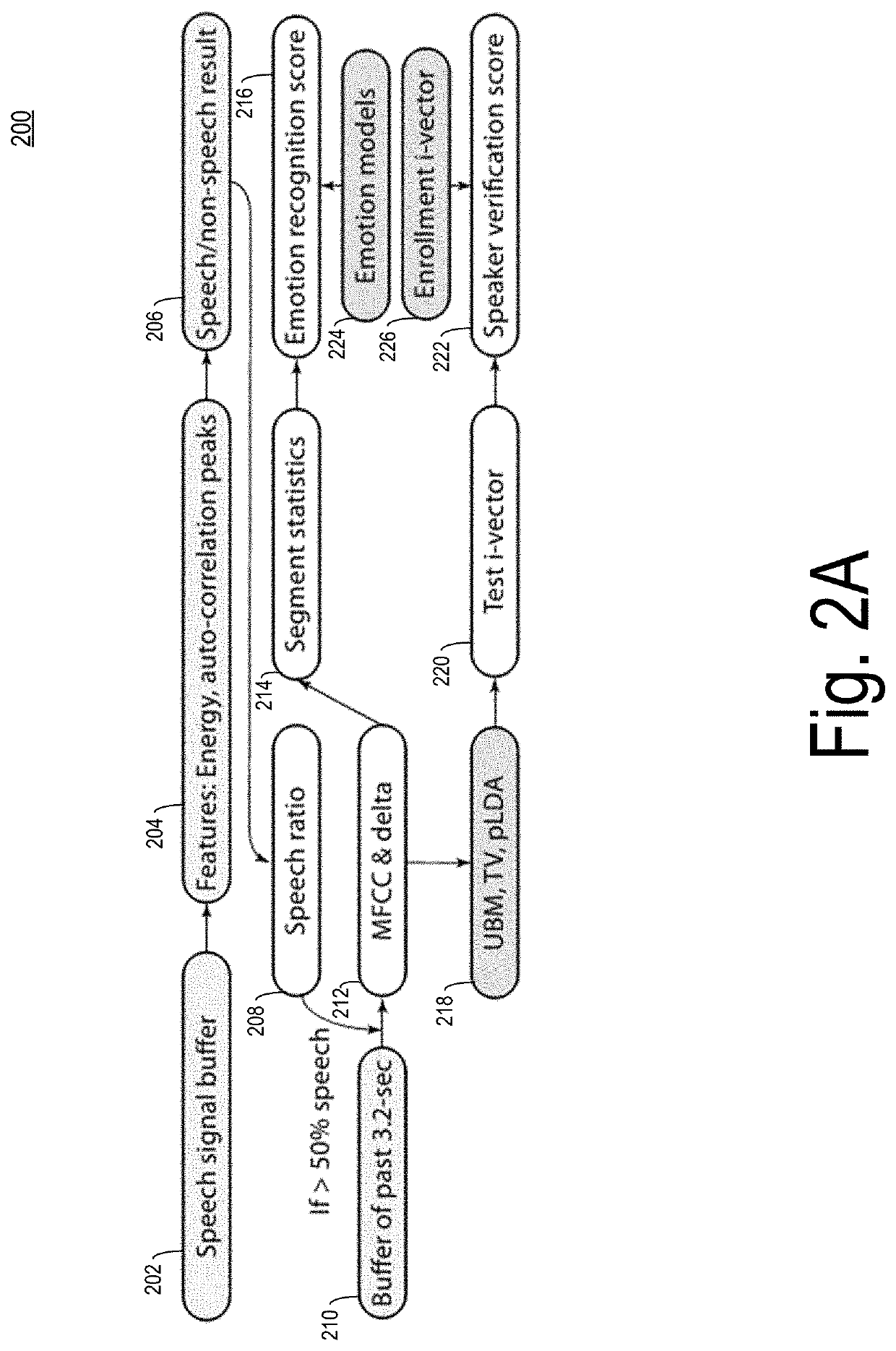Automatic speech-based longitudinal emotion and mood recognition for mental health treatment
a mental health treatment and automatic technology, applied in the field of mental health treatment, can solve the problems of psychiatric patients' overwhelming inability to recogniz
- Summary
- Abstract
- Description
- Claims
- Application Information
AI Technical Summary
Benefits of technology
Problems solved by technology
Method used
Image
Examples
example study
Participants and Testing Methodologies
[0034]The methods and systems were trained and tested in an independent study by providing a study smartphone with the app installed to a group of individuals with BD (e.g., the individual 108) and healthy controls who used the phone as their primary device for up to one year (e.g., avg. 26 weeks). Mood was measured through weekly structured telephone interviews with study clinicians using the Hamilton Depression Scale (HamD) and the Young Mania Rating Scale (YMRS) (assessment calls). All other calls were considered to be personal calls. A number of calls was recorded in a database (e.g., 46,276 recorded calls from the 51 participants with BD (e.g., 1,122 assessment calls)). All security and human subject matters were approved and monitored. The collected data was analyzed to predict the mood state of the assessment calls using a subject-independent system, even given variations in phone model and recording conditions.
[0035]The performance of th...
example smartphone application embodiments
[0041]FIG. 2A depicts a social environment sensor pipeline 200, according to an embodiment. The bubbles 202, 204, 206, and 210 of FIG. 2A may indicate basic speech processing, and the bubbles 218, 225, and 226 may indicate offline processing. In an embodiment, a method and system may include (1) a deployable smartphone app that captures audio from telephone conversations of a user (e.g., the user 108) and securely stores and transmits the audio data and (2) computational strategies to detect mood. The present techniques may include technology to measure emotion expressed and experienced using ambient microphone sensing and to predict mood from emotions and language measured from cellphone conversations and ambient audio. Expressed emotions may be measured in the ambient social environment. Ambient audio may be sampled to detect: (1) who is speaking, the participant or someone else (speaker verification) and (2) the valence and activation (emotion recognition). Together, these compon...
example feed
-Forward Neural Network Embodiments
[0070]In an embodiment, the present techniques were implemented with two emotion prediction methods / systems. The first system was a deep feed-forward neural network (FFNN) that operates on the Geneva Minimalistic Acoustic Parameter Set (eGeMAPS) feature set. The second method / system was a convolutional neural network (CNN) classifier that operated on log Mel-frequency bank (log-MFB) features. The eGeMAPS feature set is a carefully designed standardized acoustic feature set for affective computing. It is an 88-dimensional feature vector that includes features relating to energy, excitation, spectral, cepstral, and dynamic information. It should be appreciated by those of skill in the art that the set of features used to predict certain conditions (e.g., BD) may differ from those features used to predict other conditions (e.g., major depressive disorder).
[0071]Herein, the eGeMAPS feature set may be extracted using an open source toolkit or another su...
PUM
 Login to View More
Login to View More Abstract
Description
Claims
Application Information
 Login to View More
Login to View More - R&D
- Intellectual Property
- Life Sciences
- Materials
- Tech Scout
- Unparalleled Data Quality
- Higher Quality Content
- 60% Fewer Hallucinations
Browse by: Latest US Patents, China's latest patents, Technical Efficacy Thesaurus, Application Domain, Technology Topic, Popular Technical Reports.
© 2025 PatSnap. All rights reserved.Legal|Privacy policy|Modern Slavery Act Transparency Statement|Sitemap|About US| Contact US: help@patsnap.com



